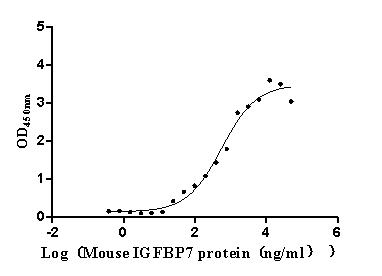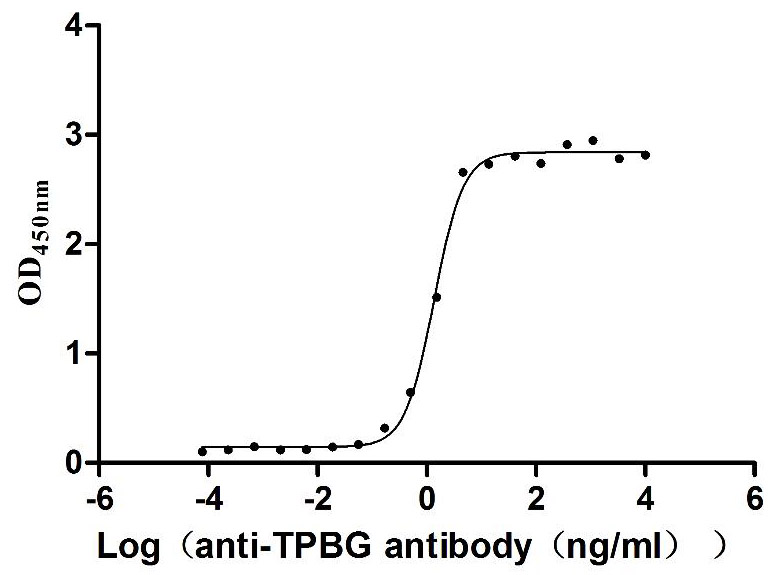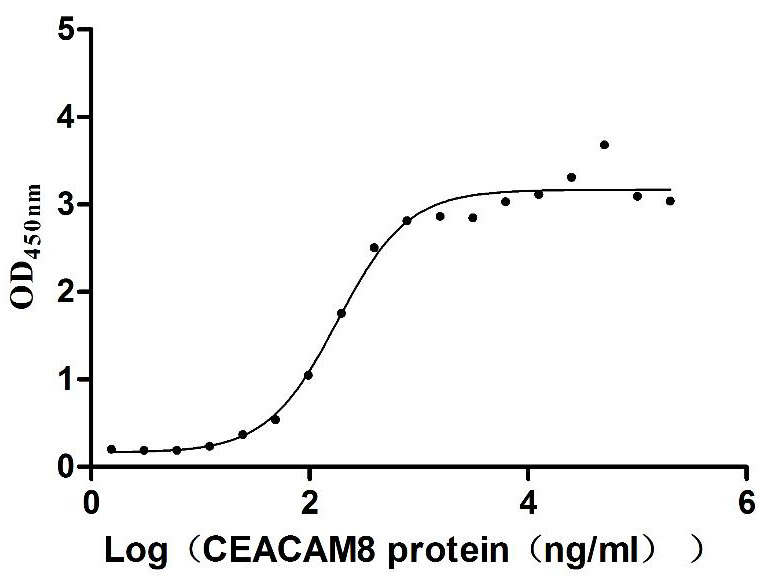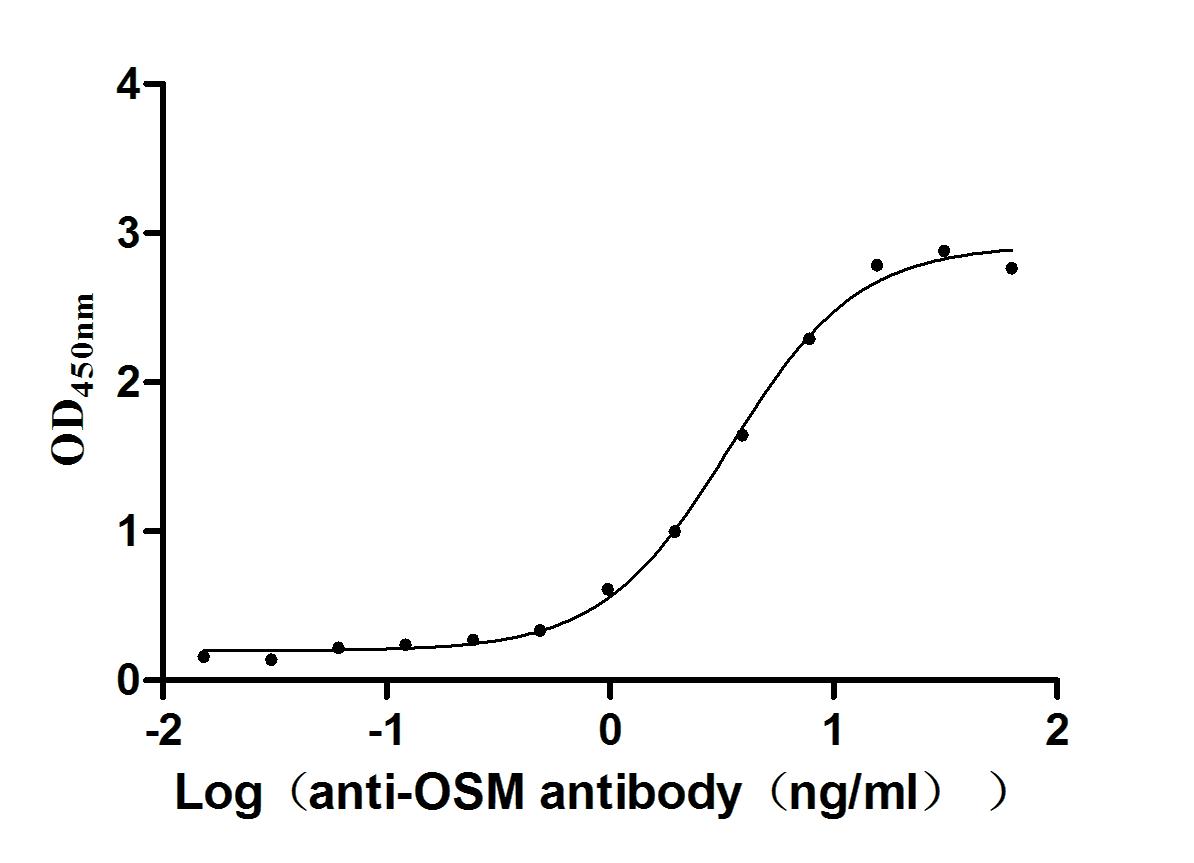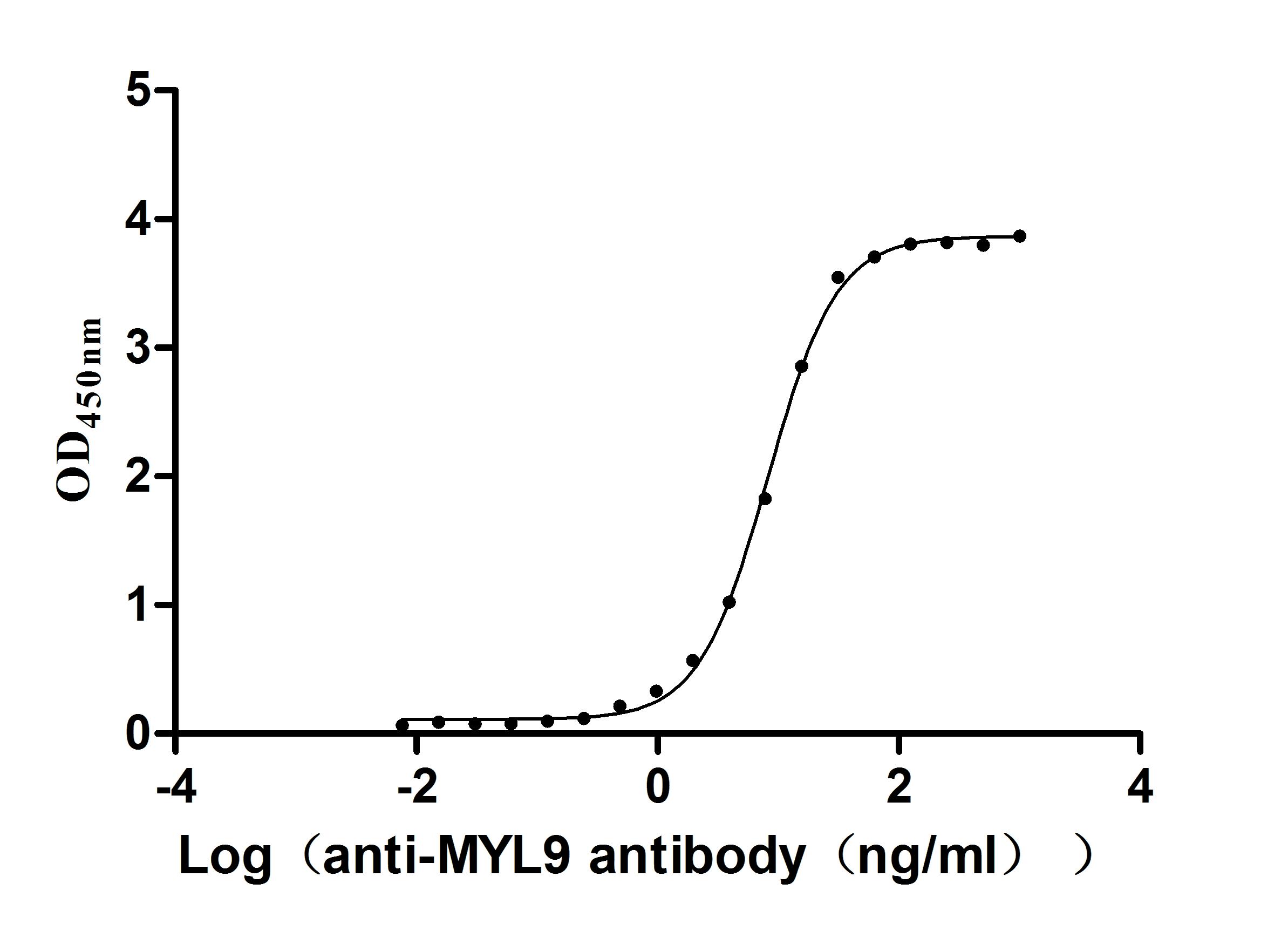Recombinant Mouse Bis (5'-adenosyl)-triphosphatase (Fhit)
In Stock-
中文名稱:小鼠Fhit重組蛋白
-
貨號:CSB-EP530819MO
-
規(guī)格:¥1836
-
圖片:
-
其他:
產(chǎn)品詳情
-
純度:Greater than 90% as determined by SDS-PAGE.
-
基因名:Fhit
-
Uniprot No.:
-
別名:FhitBis(5'-adenosyl)-triphosphatase; EC 3.6.1.29; AP3A hydrolase; AP3Aase; Diadenosine 5',5'''-P1,P3-triphosphate hydrolase; Dinucleosidetriphosphatase; Fragile histidine triad protein
-
種屬:Mus musculus (Mouse)
-
蛋白長度:Full Length of Mature Protein
-
來源:E.coli
-
分子量:21.1kDa
-
表達區(qū)域:2-150aa
-
氨基酸序列SFRFGQHLIKPSVVFLKTELSFALVNRKPVVPGHVLVCPLRPVERFRDLHPDEVADLFQVTQRVGTVVEKHFQGTSITFSMQDGPEAGQTVKHVHVHVLPRKAGDFPRNDNIYDELQKHDREEEDSPAFWRSEKEMAAEAEALRVYFQA
Note: The complete sequence may include tag sequence, target protein sequence, linker sequence and extra sequence that is translated with the protein sequence for the purpose(s) of secretion, stability, solubility, etc.
If the exact amino acid sequence of this recombinant protein is critical to your application, please explicitly request the full and complete sequence of this protein before ordering. -
蛋白標簽:N-terminal 6xHis-tagged
-
產(chǎn)品提供形式:Liquid or Lyophilized powder
Note: We will preferentially ship the format that we have in stock, however, if you have any special requirement for the format, please remark your requirement when placing the order, we will prepare according to your demand. -
緩沖液:If the delivery form is liquid, the default storage buffer is Tris/PBS-based buffer, 5%-50% glycerol.
Note: If you have any special requirement for the glycerol content, please remark when you place the order.
If the delivery form is lyophilized powder, the buffer before lyophilization is Tris/PBS-based buffer, 6% Trehalose. -
儲存條件:Store at -20°C/-80°C upon receipt, aliquoting is necessary for mutiple use. Avoid repeated freeze-thaw cycles.
-
保質(zhì)期:The shelf life is related to many factors, storage state, buffer ingredients, storage temperature and the stability of the protein itself.
Generally, the shelf life of liquid form is 6 months at -20°C/-80°C. The shelf life of lyophilized form is 12 months at -20°C/-80°C. -
貨期:3-7 business days
-
注意事項:Repeated freezing and thawing is not recommended. Store working aliquots at 4°C for up to one week.
-
Datasheet & COA:Please contact us to get it.
相關(guān)產(chǎn)品
靶點詳情
-
功能:Possesses dinucleoside triphosphate hydrolase activity. Cleaves P(1)-P(3)-bis(5'-adenosyl) triphosphate (Ap3A) to yield AMP and ADP. Can also hydrolyze P(1)-P(4)-bis(5'-adenosyl) tetraphosphate (Ap4A), but has extremely low activity with ATP. Exhibits adenylylsulfatase activity, hydrolyzing adenosine 5'-phosphosulfate to yield AMP and sulfate. Exhibits adenosine 5'-monophosphoramidase activity, hydrolyzing purine nucleotide phosphoramidates with a single phosphate group such as adenosine 5'monophosphoramidate (AMP-NH2) to yield AMP and NH2. Exhibits adenylylsulfate-ammonia adenylyltransferase, catalyzing the ammonolysis of adenosine 5'-phosphosulfate resulting in the formation of adenosine 5'-phosphoramidate. Also catalyzes the ammonolysis of adenosine 5-phosphorofluoridate and diadenosine triphosphate. Modulates transcriptional activation by CTNNB1 and thereby contributes to regulate the expression of genes essential for cell proliferation and survival, such as CCND1 and BIRC5. Plays a role in the induction of apoptosis via SRC and AKT1 signaling pathways. Inhibits MDM2-mediated proteasomal degradation of p53/TP53 and thereby plays a role in p53/TP53-mediated apoptosis. Induction of apoptosis depends on the ability of FHIT to bind P(1)-P(3)-bis(5'-adenosyl) triphosphate or related compounds, but does not require its catalytic activity. Functions as tumor suppressor.
-
基因功能參考文獻:
- Fhit loss and subsequent thymidine kinase 1 inactivation, combined with selective pressures, leads to neoplasia-associated alterations in genes and gene expression patterns in vitro and in vivo PMID: 27513973
- Fhit-deficiency mutation signature also resembles a C>T and T>C mutation signature reported for human papillary kidney cancers and a similar signature recently reported for esophageal and bladder cancers, cancers that are frequently Fhit deficient. PMID: 26782170
- Fhit deficiency-induced global genome instability promotes mutation and clonal expansion PMID: 24244712
- Fhit delocalizes annexin A4 from plasma membrane to cytosol and sensitizes lung cancer cells to paclitaxel. PMID: 24223161
- FHIT gene is a "caretaker gene" necessary for maintenance of genome stability. PMID: 23929738
- Loss of Fhit expression contributes to cell transformation. PMID: 23102829
- Defects in Fhit expression may promote MHC-I down-regulation in cancer cells and allow escape from immunosurveillance. PMID: 22451343
- Human and mouse orthologous genes, FHIT and Fhit, are more highly conserved through evolution than PTPRG/Ptprg and yet contain more sequence elements that are exquisitely sensitive to genomic rearrangements PMID: 14630947
- Fhit has a role in bladder cancer development PMID: 15569992
- UV-induced alterations of the FHIT and WWOX fragile site gene expression are involved at least partially in the checkpoint function of DNA damage PMID: 15798093
- Data suggest that heterozygosity for FHIT affects susceptibility of mice to spontaneous alopecia areata and benzo[a]pyrene-induced preneoplastic lesions of the uterus and does not alter responsiveness to budesonide and N-acetyl-L-cysteine. PMID: 16672365
- Nit1 and Fhit share tumor suppressor signaling pathways, while localization of the NIT1 gene at a stable chromosome site explains the paucity of gene alterations and in frequent loss of expression of the NIT1 gene in human malignancies. PMID: 16864578
- It is likely that the FHIT transgene is more tightly silenced in female transgenic mice, leading to a lack of protection from tumor induction PMID: 18000371
- tumor-like microdeletions in FHIT/FRA3B are induced by replication stress PMID: 18162546
- reduced oxidative stress, coupled with efficient but not error-free DNA damage repair, allows unscheduled long-term survival of genotoxin-exposed Fhit-deficient hematopoietic stem cells carrying deleterious mutations PMID: 18483248
- the extent of tumor susceptibility due to Nit1 and Fhit deficiency is additive PMID: 19479888
顯示更多
收起更多
-
亞細胞定位:Cytoplasm. Nucleus. Mitochondrion.
-
組織特異性:Expressed in heart, brain, lung and skeletal muscle. Particularly strong expression in liver, testis and kidney, where it is confined to the tubular epithelium.
-
數(shù)據(jù)庫鏈接:
Most popular with customers
-
Recombinant Human Cytokine receptor common subunit beta (CSF2RB), partial (Active)
Express system: Mammalian cell
Species: Homo sapiens (Human)
-
Recombinant Human Epithelial discoidin domain-containing receptor 1 (DDR1), partial (Active)
Express system: Mammalian cell
Species: Homo sapiens (Human)
-
Recombinant Human Interleukin-17A (IL17A) (T26A) (Active)
Express system: Baculovirus
Species: Homo sapiens (Human)
-
Recombinant Mouse Complement component C1q receptor (Cd93), partial (Active)
Express system: Mammalian cell
Species: Mus musculus (Mouse)
-
Recombinant Human Trophoblast glycoprotein (TPBG), partial (Active)
Express system: Mammalian cell
Species: Homo sapiens (Human)
-
Recombinant Human Carcinoembryonic antigen-related cell adhesion molecule 6 (CEACAM6) (Active)
Express system: Mammalian cell
Species: Homo sapiens (Human)
-
Recombinant Human Oncostatin-M (OSM), partial (Active)
Express system: Mammalian cell
Species: Homo sapiens (Human)
-
Recombinant Human Myosin regulatory light chain 12B (MYL12B) (Active)
Express system: E.coli
Species: Homo sapiens (Human)



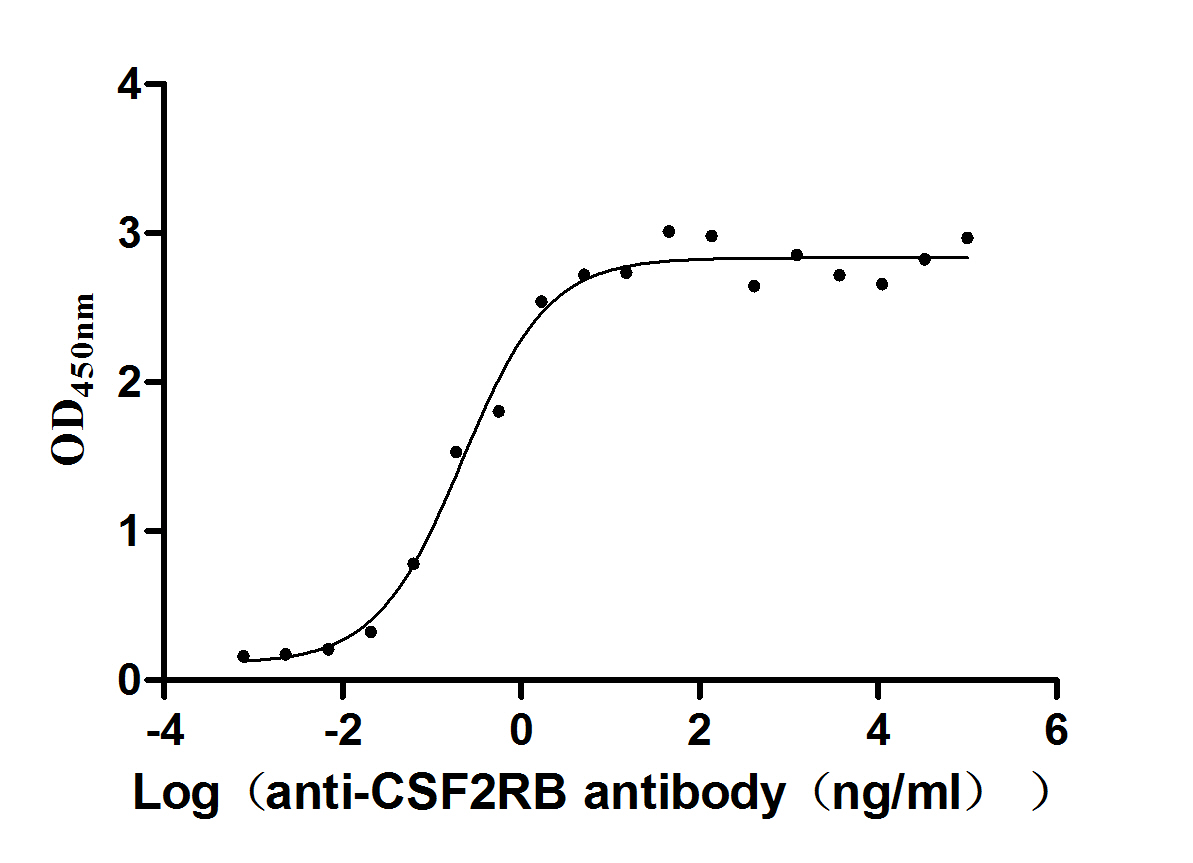

-AC1.jpg)
